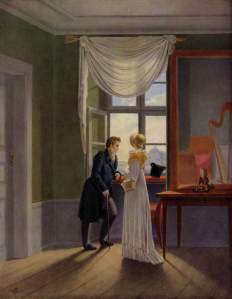 |
| About done. Carnitas in one of my Dutch ovens. |
Carnitas are a Mexican stable, actually "men's" food, that are surprisingly easy to make. They're also dashed good, either prepared in the home or on a campout. The essential ingredient isn't food. It's a cast iron, unglazed dutch oven. There's a whole mythology about curing these (some other post). However, as long as you don't use soap or detergent on them, keep them dry and oiled, and generally don't abuse them too much, they'll serve for many years. The black layer is an iron oxide (not hydroxide or rust) that is relatively non-reactive with the water and sugars in the food. Hence things tend not to stick.
Enough chemistry, here's the recipe:
Cut boneless pork butt or similar slightly fatty pork into large (2-3 inch, 5-6 cm) chunks. Remove any obviously nasty bits, but don't be too neat. Flour the meat in a mixture of wheat flour (plain flour) with oregano, ground chilli pepper (NOT chilli powder which has cumin in it). The meat can be frozen at this step for later use. I used chipolte for this batch, but only because I was out of the powdered pepper from my last trip to New Mexico. Typically for a cup of flour, I'll use a tablespoon of both oregano and chilli, but your mileage may vary.
Place a layer of oil in the bottom of the dutch oven (or 1/2 stick of vegetable shortening, or a similar amount of Lard (authentic)). The idea is to have enough fat on the bottom to coat it so that the meat is greased before the fat from it cooks out.
Indoors: Bake in a 350 degree oven for 2-3 hours. The pork will be very tender when done. You should turn the meat once or twice during this time.
Outdoors: Use charcoal briquettes, about 8 beneath and 8-12 on top. Rotate the dutch oven about 90 degrees every 15 minutes, and counter rotate the lid about the same amount. Add charcoal as needed. You don't want it too hot, but you need it to cook.
We served this with tortillas, fresh salsa, lettuce and yogurt (out of sour cream). Oh, and hot peppers.



